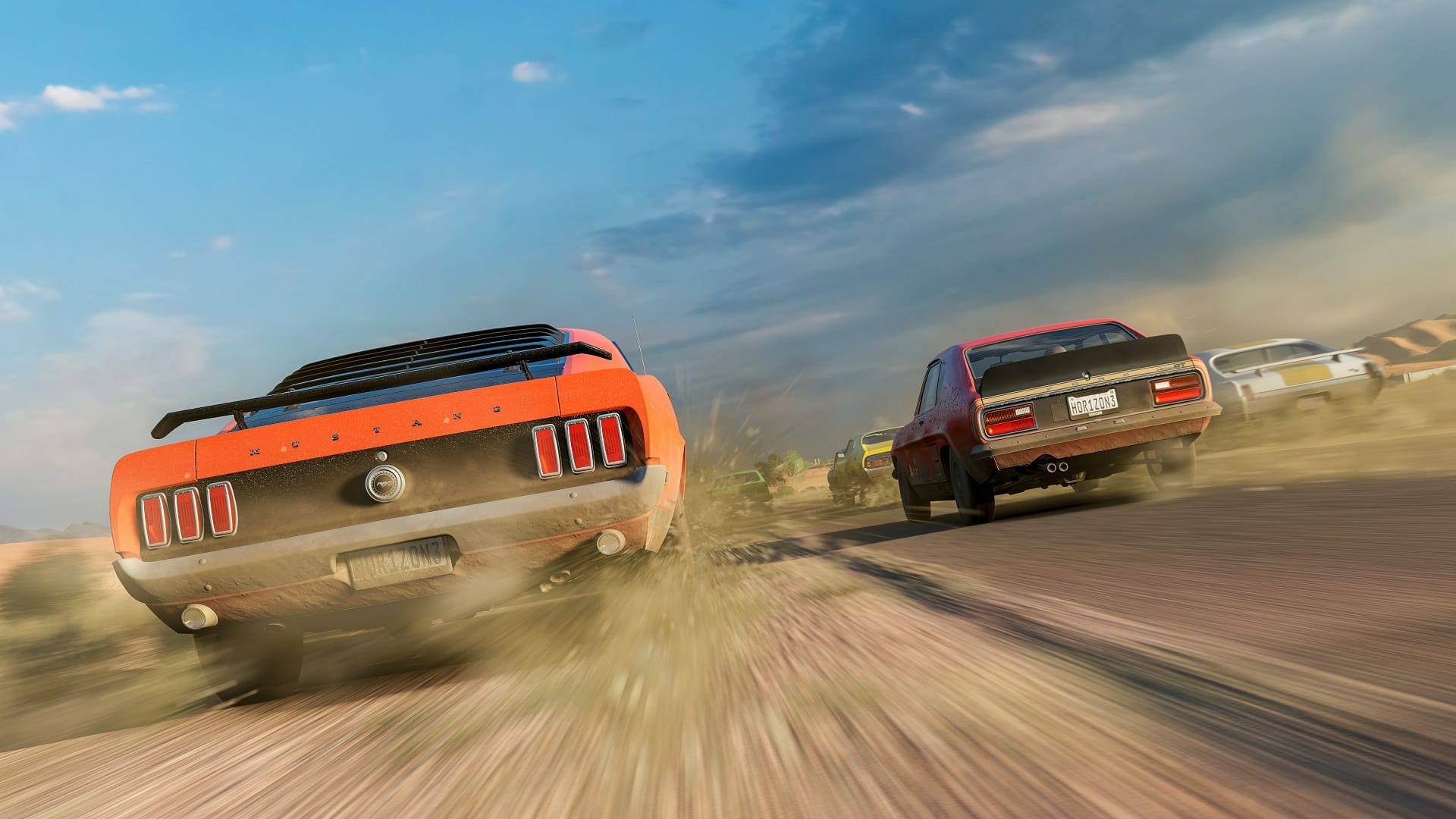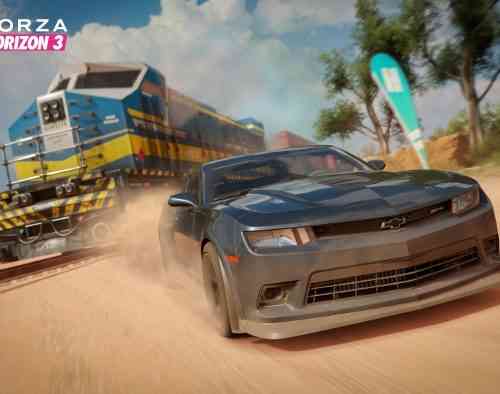With the PS5, Sony has merged all the other options with those found in the PlayStation menu, the one that popped up on the PS4 when you long-pressed the PlayStation button. It's now accessible with a single tap — and it contains game/app switcher, what friends are playing, download progress, music, sound and mic settings, battery life, and power menu. You can customise this to bring in quick-look settings for broadcasts, accessibility, network, and PlayStation VR. The Scuf Instinct and Scuf Instinct Pro are deeply customisable controllers for Xbox consoles and PC. I opted for a controller with an interesting topographical map theme in blue and gold, matching this with mono-colour face buttons, black sticks, and grey d-pad, shoulder buttons and triggers. There are tons of options here, with eleven elements you can tweak - including less cosmetic changes like ripping out the rumble motors for a lighter gamepad or opting for different shape sticks.
(Scuf's earlier Xbox One era Prestige controller has even more colour options - the firm assured me that the Instinct series will have a similar number of options eventually). The Pro adds rubber grips and four rear buttons - fittingly, features that may prove handy for high-level play but are easily dispensed with to save some money on what is already an expensive proposition. The original Xbox One model was succeeded by the Xbox One S in 2016, which has a smaller form factor and support for HDR10 high-dynamic-range video, as well as support for 4K video playback and upscaling of games from 1080p to 4K. It was praised for its smaller size, its on-screen visual improvements, and its lack of an external power supply, but its regressions such as the lack of a native Kinect port were noted.
A high-end model, named Xbox One X, was unveiled in June 2017 and released in November; it features upgraded hardware specifications and support for rendering games at 4K resolution. The system was succeeded by the Xbox Series X and Series S consoles, which launched on November 10, 2020. Production of all Xbox One consoles ceased at the end of 2020.
Moving away from its predecessor's PowerPC-based architecture, the Xbox One marks a shift back to the x86 architecture used in the original Xbox; it features an AMD Accelerated Processing Unit built around the x86-64 instruction set. Xbox One's controller was redesigned over the Xbox 360's, with a redesigned body, D-pad, and triggers capable of delivering directional haptic feedback. The console places an increased emphasis on cloud computing, as well as social networking features and the ability to record and share video clips or screenshots from gameplay or livestream directly to streaming services such as Mixer and Twitch. Games can also be played off-console via a local area network on supported Windows 10 devices. The console can play Blu-ray Disc, and overlay live television programming from an existing set-top box or a digital tuner for digital terrestrial television with an enhanced program guide. The console optionally included a redesigned Kinect sensor, marketed as the "Kinect 2.0", providing improved motion tracking and voice recognition.
The SteelSeries Stratus Duo is another clever controller; this time it's all about supporting multiple platforms. As well as connecting to PCs via a 2.4GHz USB dongle, the Stratus Duo can also connect to Bluetooth devices like phones and tablets when a switch is flicked on the back of the unit. Battery life is lower when you're using Bluetooth mode, but given your phone is best-suited for short play sessions, this isn't a massive concern. The Stratus Duo works on both iOS and Android, but it is worth remembering that not all games support gamepads natively. However, for playing Fortnite or an emulated SNES title, the Stratus Duo works great. While the controller's build quality seems sound and the controls feel accurate, the button layout isn't ideal - I found it tricky to tap the middle buttons without getting tangled up in the thumb sticks.
It's also disappointing that the SmartGrip accessory for actually mounting the controller to your phone is a $10/£10 optional add-on - for the price, it really ought to be in the box. The Nacon Rig Pro Compact does exactly what it says on the tin, providing an Xbox-style controller that is more diminutive than the first-party models. This makes it a better choice for the significant percentage of the world's population that has smaller hands. Even the middle buttons - Menu, Select, Share - have been moved closer to extremities of the controller to make these oft-useful keys easier to press. The Pro Compact feels relatively well made, and unlikely to break, but its light weight makes it almost feel a little hollow despite its robust exterior.
This Nacon controller also comes with Dolby Atmos for Xbox and PC; just install and run the Dolby Atmos app from the Windows or Xbox store with a headset connected to get a free lifetime license (normally $15). There's also a Pro Compact app for both platforms that allows you to customise the button assignments, stick sensitivity, and so on. All in all, it's a convincing package given that it costs less than a standard Xbox controller. Over on the left, the Steam button launches a menu that mainly covers account settings and features, including chat, screenshots and the download manager.
It's all laid out sensibly and feels zippy to operate, whether by touchscreen or the controls. And if you really want to delve into the Deck's specialist skills, holding down the power button lets you switch to a desktop view. It's still Linux, but the layout is close enough to Windows that it's relatively easy to pick up, and from here you can launch browsers and download applications just as you would on a PC.
I even had questionably-named image editor GIMP downloaded in a few taps, though obviously any desktop UI is best used with a mouse and keyboard. Any USB-C hub should work for those – you don't need to buy Valve's own Steak Deck hub, once it's available. It uses a system-on-chip known as Scorpio Engine, which incorporates a 2.3 GHz octa-core CPU, and a Radeon GPU with 40 Compute Units clocked at 1172 MHz, generating 6 teraflops of graphical computing performance. It also includes 12 GB of GDDR5 RAM with 9 GB allocated to games. Scorpio Engine's CPU utilizes a custom platform designed to maintain compatibility with the Jaguar CPU of the original Xbox One, but with a 31% increase in performance; the custom platform is unrelated to AMD's current Ryzen architecture.
The console uses a vapor-chamber method of cooling for the SoC, and motherboards tailored to the exact voltage needs of each individual Scorpio SoC to optimize their output and energy usage. The console also supports AMD's FreeSync technology, 1440p resolution, and/or 120 Hz refresh rate on compatible displays. The Xbox One S is available in 500 GB, 1 TB, and a "special edition" 2 TB model, which originally retailed at US$299, $349, and $399 respectively. The 2 TB model was released on August 2, 2016, and 1 TB and 500 GB models were released on August 23, 2016.
On June 11, 2017, Microsoft lowered the prices of the 500 GB Battlefield 1 and 1 TB Forza Horizon 3 Xbox One S console bundles by US$50. At Gamescom 2017, Microsoft unveiled a 1 TB Minecraft limited edition, with a grass block-themed hardware and a Creeper-themed controller. During an Inside Xbox livestream in September 2018, Microsoft unveiled a 1 TB Fortnite Battle Royale bundle, with online codes to acquire unique in-game Eon-themed items and currency.
Can You Play Forza Horizon 4 On Pc With A Ps4 Controller On October 9, 2018, Microsoft announced that they would be releasing a 1 TB Minecraft Creators bundle, with a download code for Minecraft, in-game currency, DLC packs, and a free trial for Xbox Game Pass and Xbox Live Gold. On June 7, 2019, Microsoft released a second Fortnite bundle with purple hardware, as well as in-game currency and items. On March 17, 2020, a similar Roblox bundle was released, bundled with in-game items and currency, and a one-month trial of Xbox Game Pass Ultimate. Xbox division head Phil Spencer had also hinted the possibility of adding support for games from the original Xbox.
For the backwards compatibility team, after they completed the framework for Xbox 360 compatibility so that other engineering teams could take over, they turned to the question of compatibility with the original Xbox console. The program was started in November 2016, under the code name "Fusion", and was led by software engineer Spencer Perreault. Perreault initially tried the same approaches as the team had done with "Fission", but due to the differences in memory management sizes and chipset bit-rates, these initial tests failed. Instead, Perreault worked to bring "Dolphin", a developer tool for the original Xbox, working to get its emulation correct. As with Xbox 360 backwards compatibility, the Fusion emulation enables Xbox games to be scaled to 1080p resolutions, work with Xbox One networking features, and can allow mixed-console System Link connection between all three generations of Xbox.
Xbox One's user interface uses Microsoft's Fluent Design System; previous iterations of the console's software used the Metro design language. The dashboard is divided into "Home", "Mixer", "Community", "Entertainment", and "Store" sections, with the "Home" page further divided into "blocks" that can display pinned games/apps, as well as other content. Pressing the Xbox Guide button opens a sidebar with access to common functions such as the friends list, apps, the user's party, and settings. Users can go back to the dashboard while using games or apps using either the Xbox button on their controller or a voice command; up to four apps can run at once, but only one game can run at a time.
Use of Kinect enables the ability to control the console via voice commands. Xbox One's voice control capabilities are similar to, albeit richer than those of Xbox 360. The voice assistant Cortana was added in 2016 to provide expanded voice command functionality with natural language recognition.
On June 19, 2013, shortly after E3 2013, Microsoft announced that it would change its policy Xbox One's DRM and game licensing model and reverse course. These changes required the family sharing features, along with the ability to play games without their disc after installation, to be dropped. Xbox One chief product officer Marc Whitten stated that the family sharing feature may return in the future, but could not be implemented on launch due to time restraints.
Don Mattrick, then president of Microsoft's Interactive Entertainment Business, stated that the licensing changes were in response to the negative public reaction. Other analysts believed the change was in direct response to Sony's aggressive position during its E3 conference. On July 1, 2013, Mattrick, who had been a leader in development on the Xbox One, announced his departure from Microsoft to become CEO of Zynga. Analysts speculated that his departure was predicated on the poor response and subsequent reversal of the plans for Xbox One. The Xbox Wireless Controller maintains the overall layout found in the Xbox 360's controller, but with various refinements to its form. Among its changes include a smoother form, textured analog sticks, a four-way directional pad, and redesigned triggers and shoulder buttons with a curved shape for ergonomics.
"Menu" and "View" buttons have replaced the Start and Back buttons. Each trigger features independent rumble motors called "Impulse Triggers", which allows developers to program directional vibration. One trigger can be made to vibrate when firing a gun, or both can work together to create feedback that indicates the direction of an incoming hit.
The controller also contains light emitters that allow it to be tracked and paired using the Kinect sensor, and to detect when it's not being held to automatically enter a low-power state. An updated revision of the controller was released in June 2015, which includes a 3.5-millimeter headphone jack and other minor changes. A third revision was introduced alongside and first bundled with Xbox One S, with textured grips and Bluetooth support. Initial hardware for the 360's successor, commonly referred to by the industry as the "Xbox 720", was reportedly under development as early as May 2011. The official developer kit was codenamed Durango, and appeared to be available to developers by mid-2012. The Xbox One S revision was critically praised for its improvements over the original model, including its streamlined design, the addition of HDR and 4K video support, and visual improvements on some games when upscaled to 4K.
At its launch, the Xbox One did not have native backward compatibility with original Xbox or Xbox 360 games, and at the time Microsoft stated it had no plans for any form of backward compatibility on the console. Don Mattrick, head of the company's Interactive Entertainment Business at the time, said in an interview that he didn't see backwards compatibility as a problem and stated that "If you're backwards compatible, you're backwards". According to Mattrick, investing in backward compatibility wasn't worth the company's time and resources, as only 5% of Microsoft's customers played older games on new video game consoles.
Reaction to this digital rights management scheme was extremely negative in light of the previous concerns about the "always on" console from earlier in the year. Microsoft also stated that game publishers would decide whether the physical copies of their games would be eligible for resale, and could impose restrictions or activation fees on second-hand copies of games. In addition, loaning or renting games would not be possible at the console's launch, and Microsoft was "exploring the possibilities" with its partners.
The Xbox One received positive reviews for its refined controller design, multimedia features, and voice navigation. Its quieter and cooler design was praised for making the console more reliable than its predecessor at launch, but the console was generally criticized for running games at a technically lower graphical level than the PlayStation 4. Its original user interface was panned for being nonintuitive, although changes made to it and other aspects of the console's software post-launch received a positive reception. Its Kinect received praise for its improved motion-tracking accuracy, its face recognition logins, and its voice commands. Valve estimates you should get between 2-8 hours of gameplay between charges if you're capping the framerate at the 30fps baseline and keeping the brightness and volume at about 50%.
Again, we've got more testing to do here, but we've got nowhere near eight hours yet, and a lot closer to the lower end of the spectrum than we'd like. While you're in the process of downloading all of your games you should expect regular trips to the nearest plug socket, too. The Deck can get warm, though crucially not around the controls, and very noisy indeed pretty quickly too, but so far it's handled everything we've thrown at it. Imagine being able to take Steam's vast library of games, including any you already own, and play them anywhere on a powerful portable PC that can be just about anything you want it to be. If you'd rather play on a big screen you can dock your Deck and instantly do so, just like you can with Mario and Zelda on the Switch. But unlike the Switch, the ability to install other launchers, game stores and operating systems means you're not walled in by anyone or any rules.
It's still very early days for Deck, and it doesn't feel like a finished product just yet. The US is sometimes referred by pundits as a "traditional Xbox market" alongside the UK and Australia, which are regions where Xbox systems tend to do particularly well. Microsoft announced that the Xbox One had sold 909,132 units in November 2013, based on only nine days of sales. The Xbox One launch in November 2013 was nearly three times that of the Xbox 360 launch in November 2005. Xbox One was the best-selling console in December 2013, selling 908,000 units. On June 13, 2016, during its E press conference, Microsoft unveiled Xbox One S, a revision of the original Xbox One hardware with a streamlined form factor and support for HDR10 and 4K video.
The Xbox One S replaced the original launch hardware which had been discontinued around the same time. Stadia is Google's gaming platform that lets you instantly play video games on compatible screens you already own. Games are ready wherever you have internet, without waiting for installs, downloads, or updates⁵. The first custom PS5 controllers are also slowly becoming available, including from Scuf and MegaModz.
We tested a custom DualSense controller from MegaModz with a custom shell, mechanical shoulder/face buttons, and interchangeable thumbsticks. The controller feels fantastic to use, thanks to those mechanical upgrades, and it's nice to see a PS5 controller that looks so different from the standard colour options too. Of course, custom controllers don't come cheap, but if you spend a lot of time playing controller-friendly games on PC and PS5 then it could well be worth the upgrade over the standard DualSense.
A newer game like God of War gives the Deck a bit more of a workout, but the results are still eye-opening. Kratos' PS4 epic only landed on PC at the beginning of this year, but on Steam Deck's default graphics settings with V-sync turned on it easily maintained the 30fps floor Valve is working to, and a lot of the time seems to comfortably outperform it. All of the Deck-Verified games we've booted up so far perform really well, and loading times don't seem too bad either, but we're going to play a lot more over the coming days before making any final conclusions. This being a Valve-made handheld, we felt obligated to make Portal 2 the first game we tested.
It might be nearly 11 years old, but it's still a wildly inventive masterpiece in game design and straight away showed up in the Verified list in our library. A 1 TB Forza Motorsport 6 bundle was released on September 15, 2015, which features blue-colored hardware with racing stripes and a push-button start-inspired design around the power button, and customized hardware sound effects. In an August 2016 review of the Xbox One S model, TechRadar further commended Microsoft's recent improvements to Xbox One, citing a strong lineup of first-party titles in 2015 and further improvements to the console's interface. On June 10, 2019, Microsoft stated that it had wound down the addition of new titles to the backwards compatibility program in order to focus on Xbox One's successor, the Xbox Series X/S console, which was released in November 2020.
Microsoft announced one last set of additions to the backward compatibility program on November 15, 2021, as part of their 20th anniversary of the Xbox, adding 76 titles new to the program. However, Microsoft anticipated this will be the last set of backwards-compatible titles they can add, as they "have reached the limit of our ability to bring new games to the catalog from the past due to licensing, legal and technical constraints". Xbox 360 backward compatibility uses "Fission", a software emulator within the system software; 104 Xbox 360 titles were supported at the feature's public launch, with more added in the following months. Xbox 360 games contained within Rare Replay are packaged as standalone applications using the Xbox 360 emulation.
Microsoft stated that publishers would only need to provide permission to the company to allow the repackaging, and it expected the number of supported games to increase significantly over time. Microsoft, along with fourteen other third-party publishers, will offer supported games, and all Games with Gold titles on Xbox 360 since November 2015 are made compatible. In 2016, Microsoft began to make future Xbox One-exclusive first-party releases simultaneously available on Windows 10 PCs, with digital cross-buy support via Microsoft Store under the branding Xbox Play Anywhere. This, thus, makes the games Microsoft platform exclusives rather than Xbox One exclusives. In a press conference on May 21, 2013, the new console was publicly unveiled under the name Xbox One, and was presented as an all-in-one home entertainment device. The event focused heavily on the device's multimedia capabilities, demonstrating integration with television for over 30 minutes before any video games were shown.

























